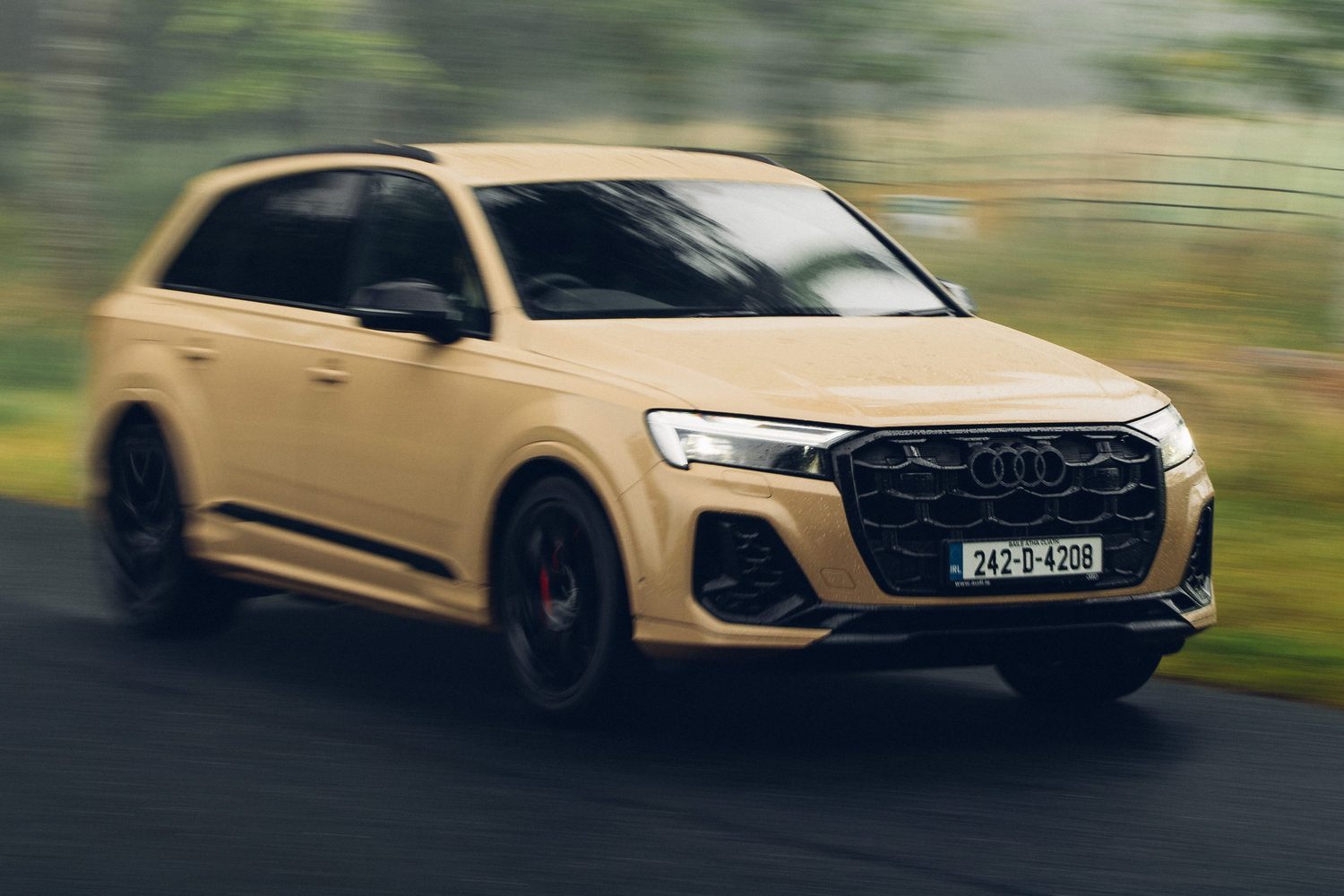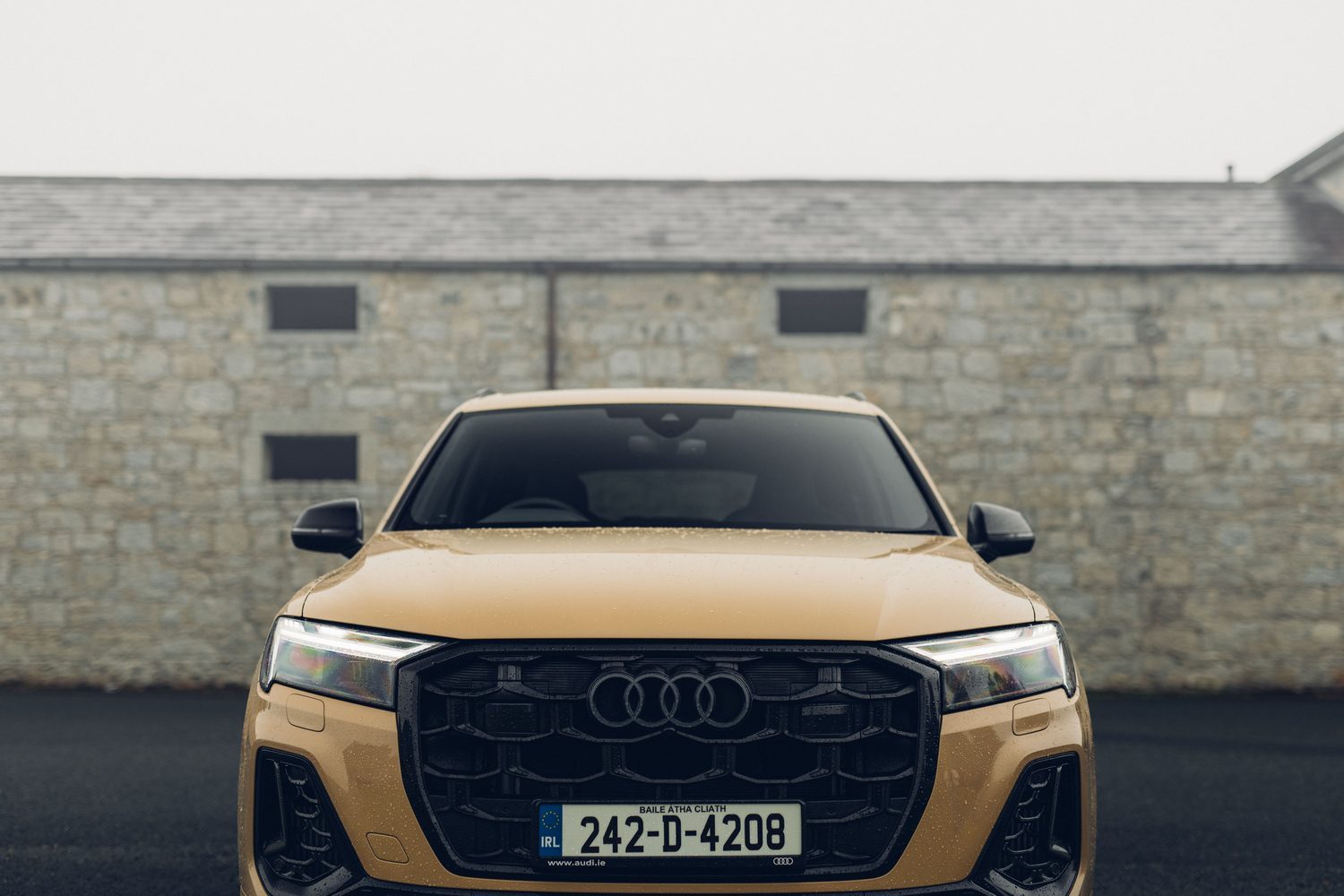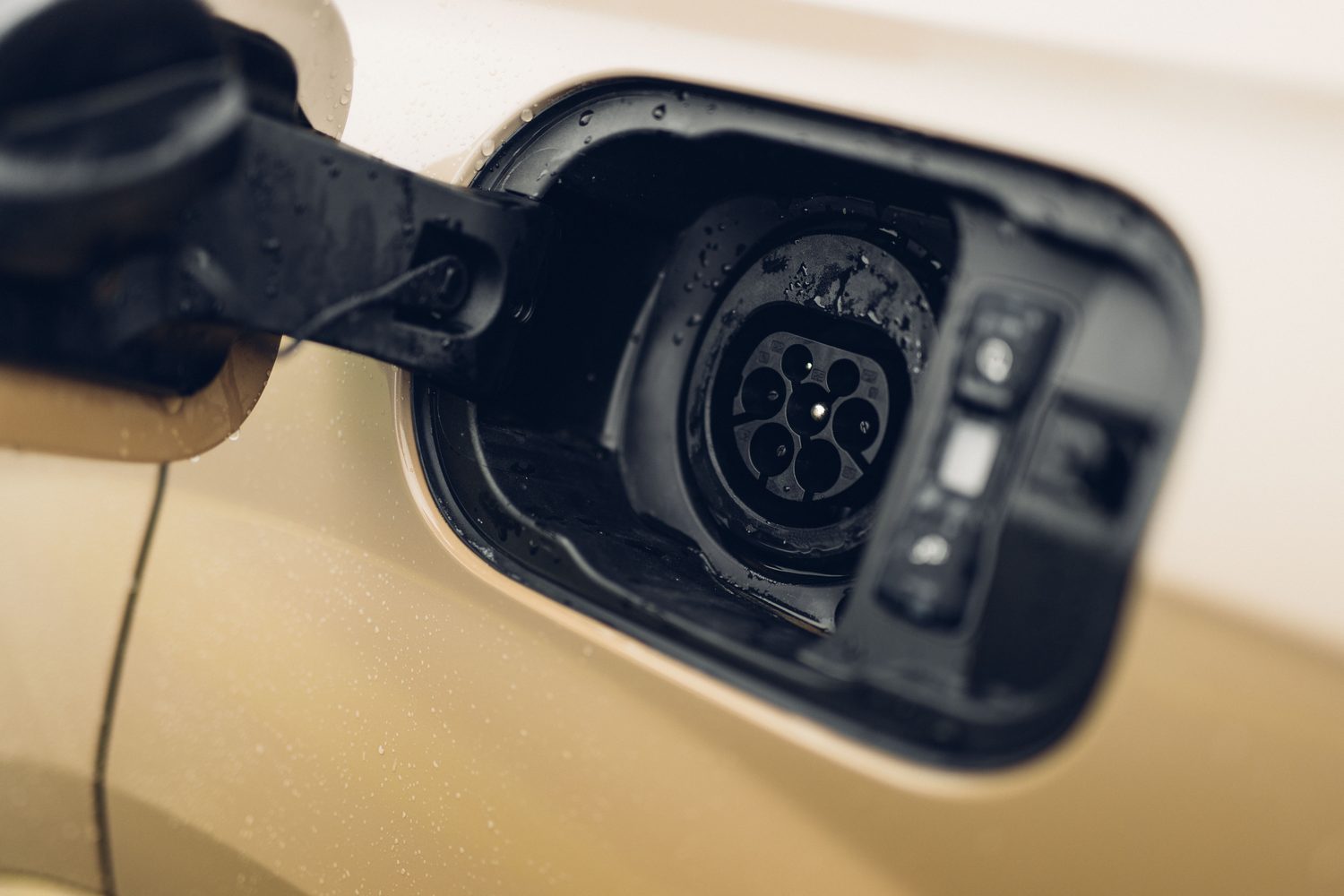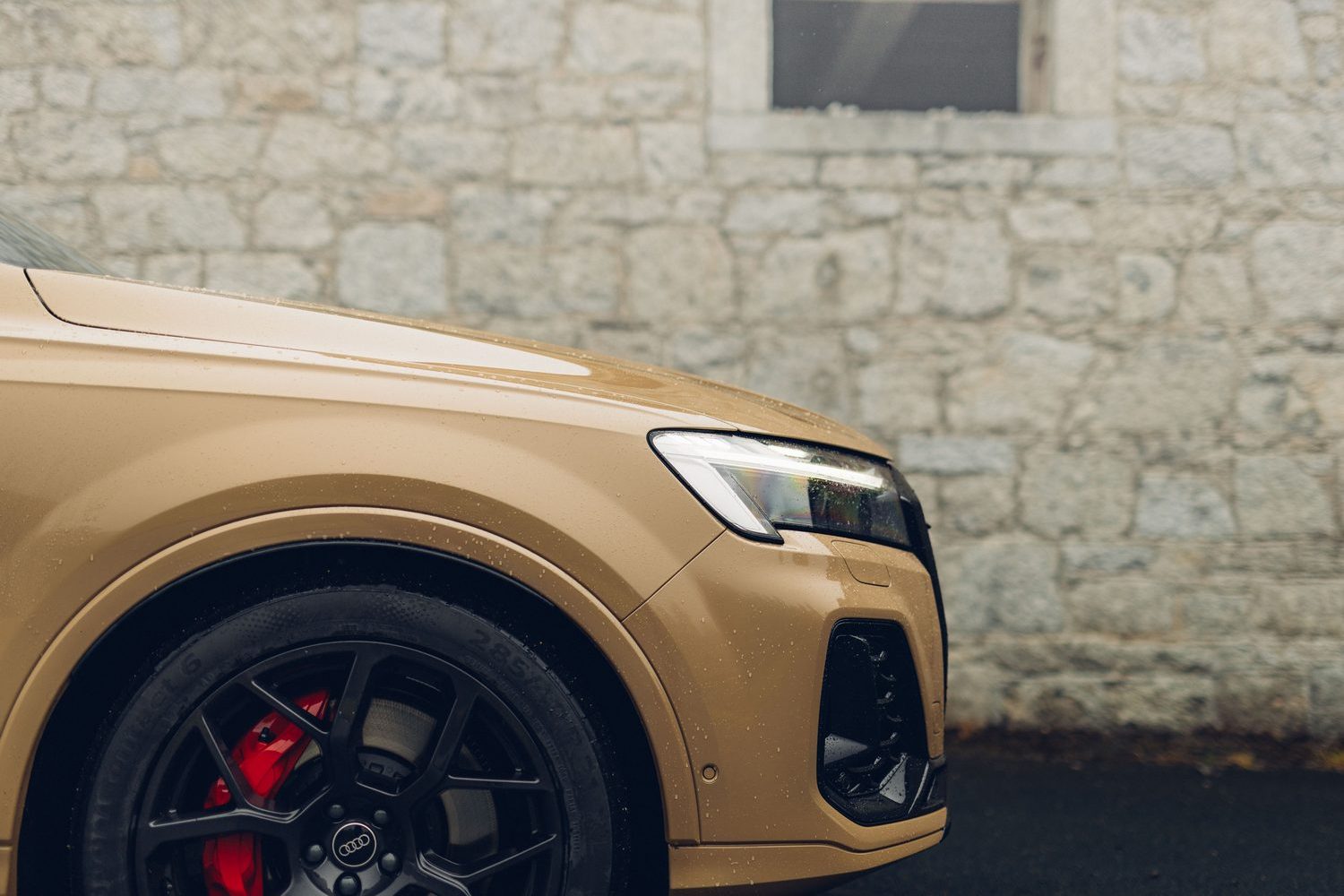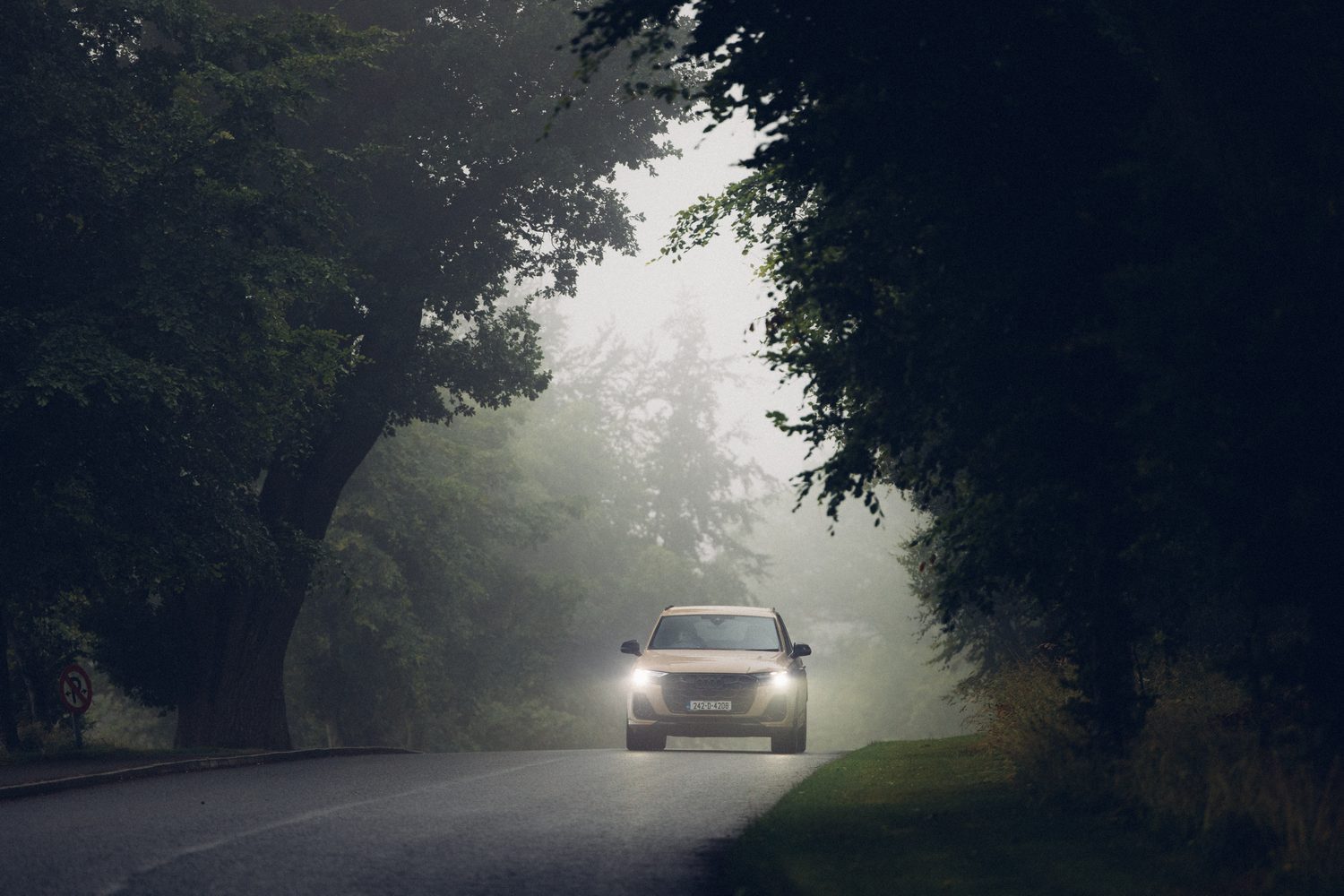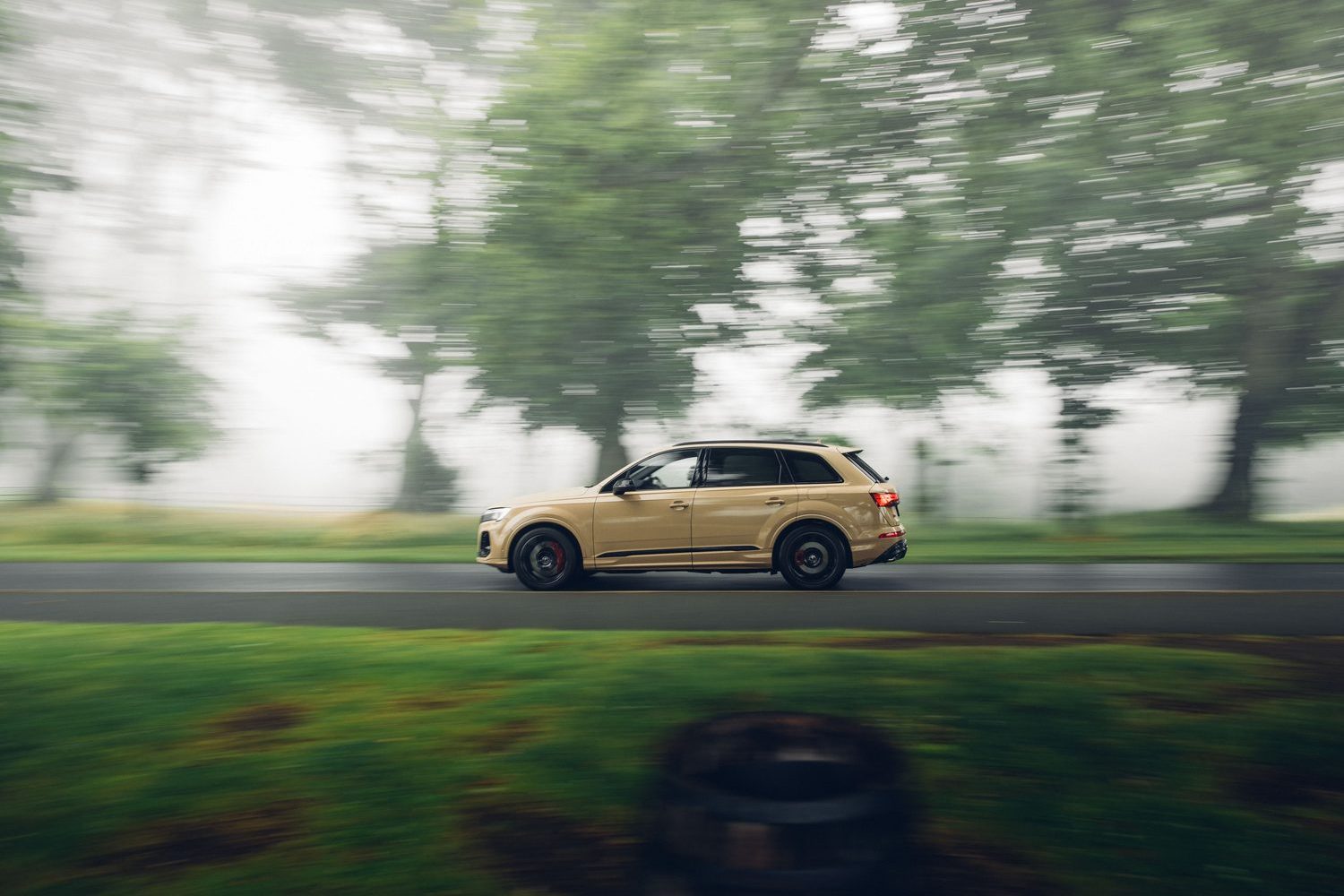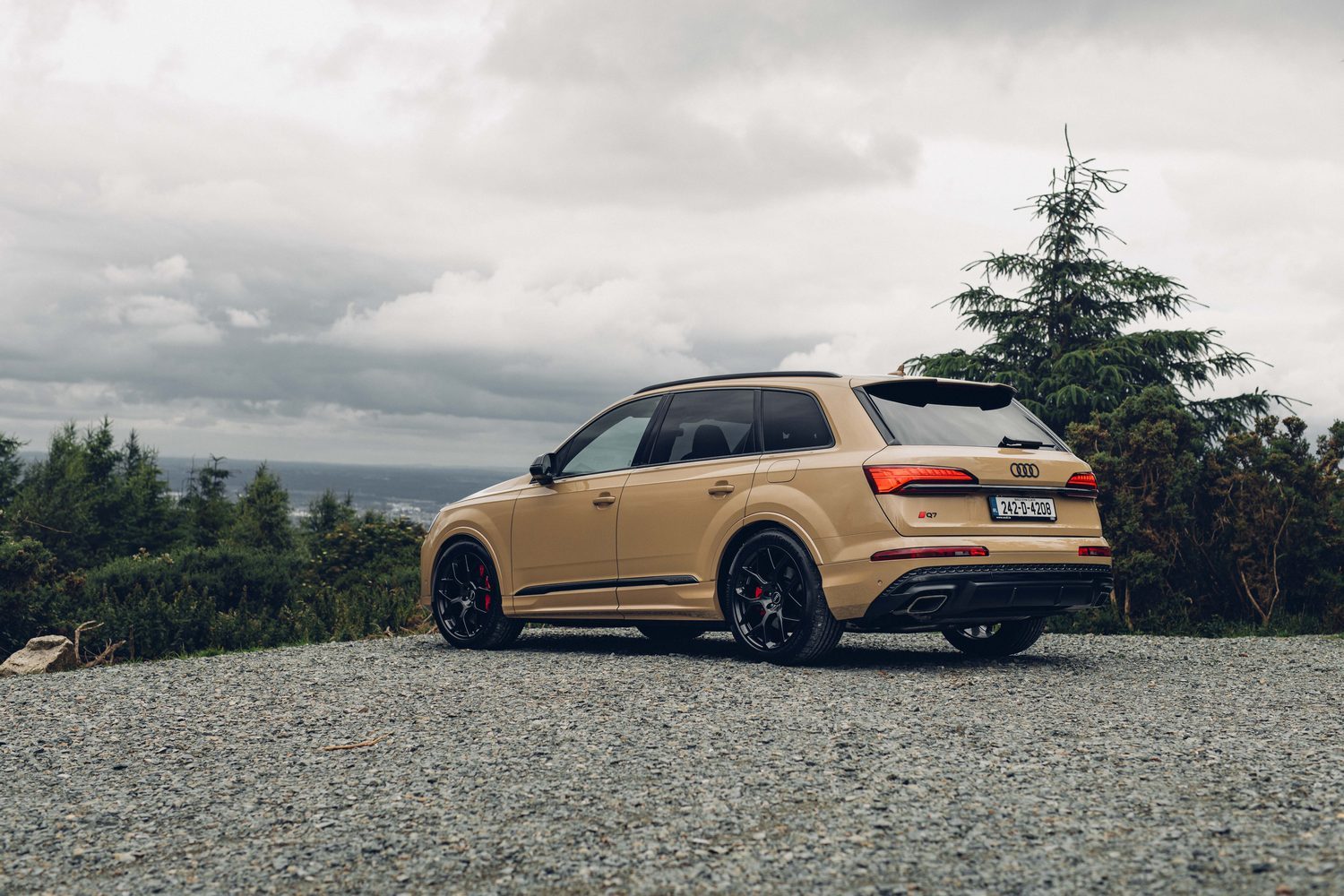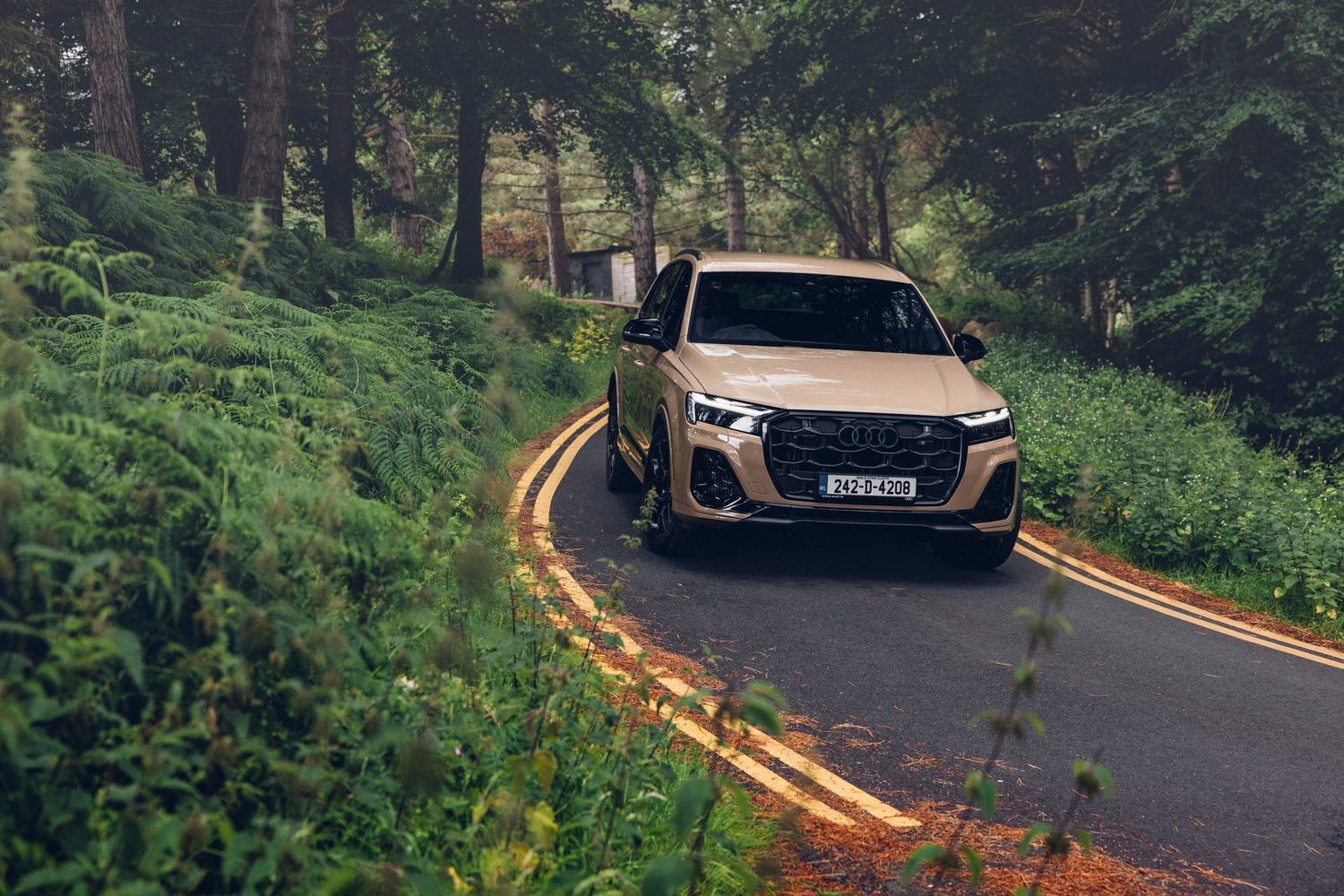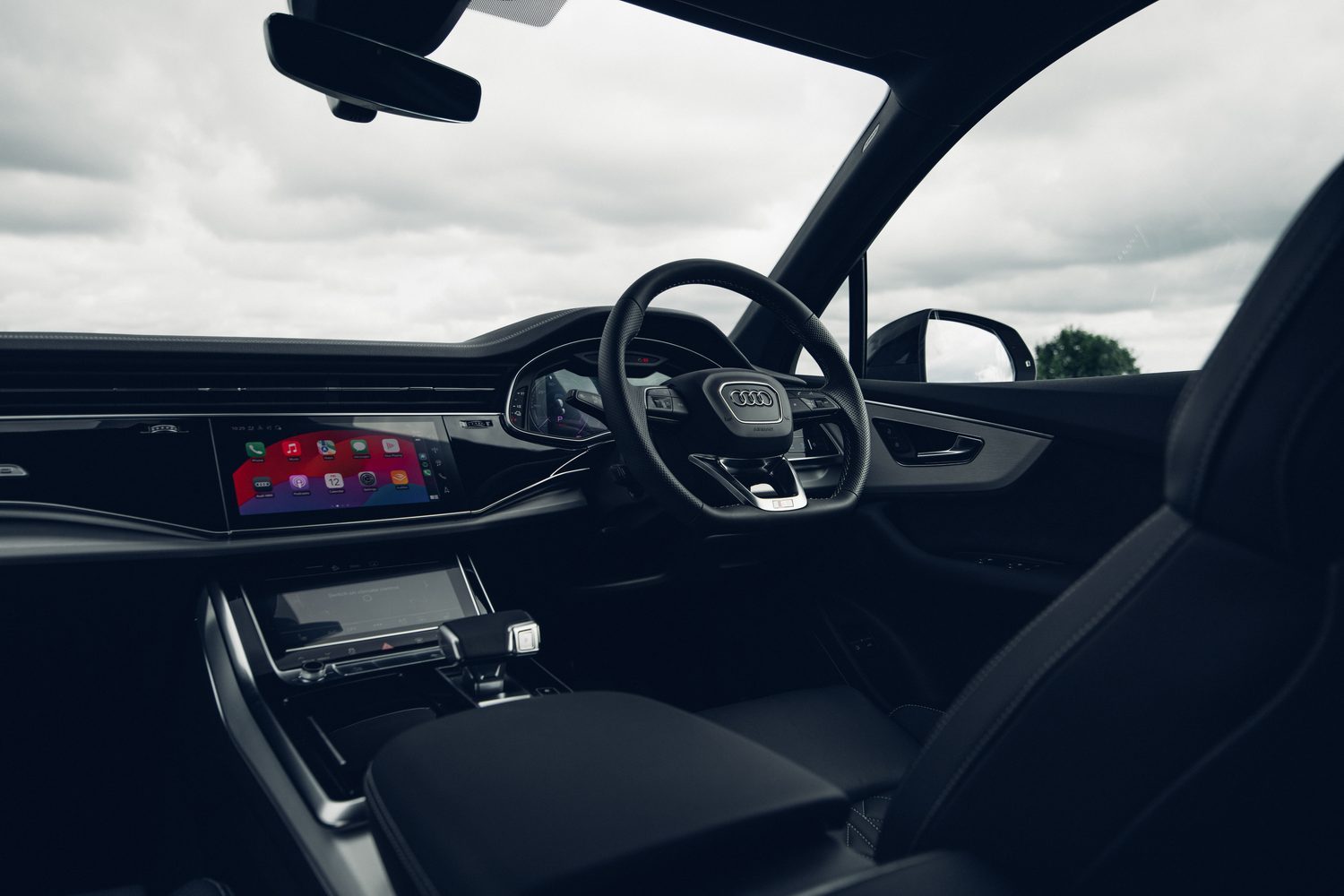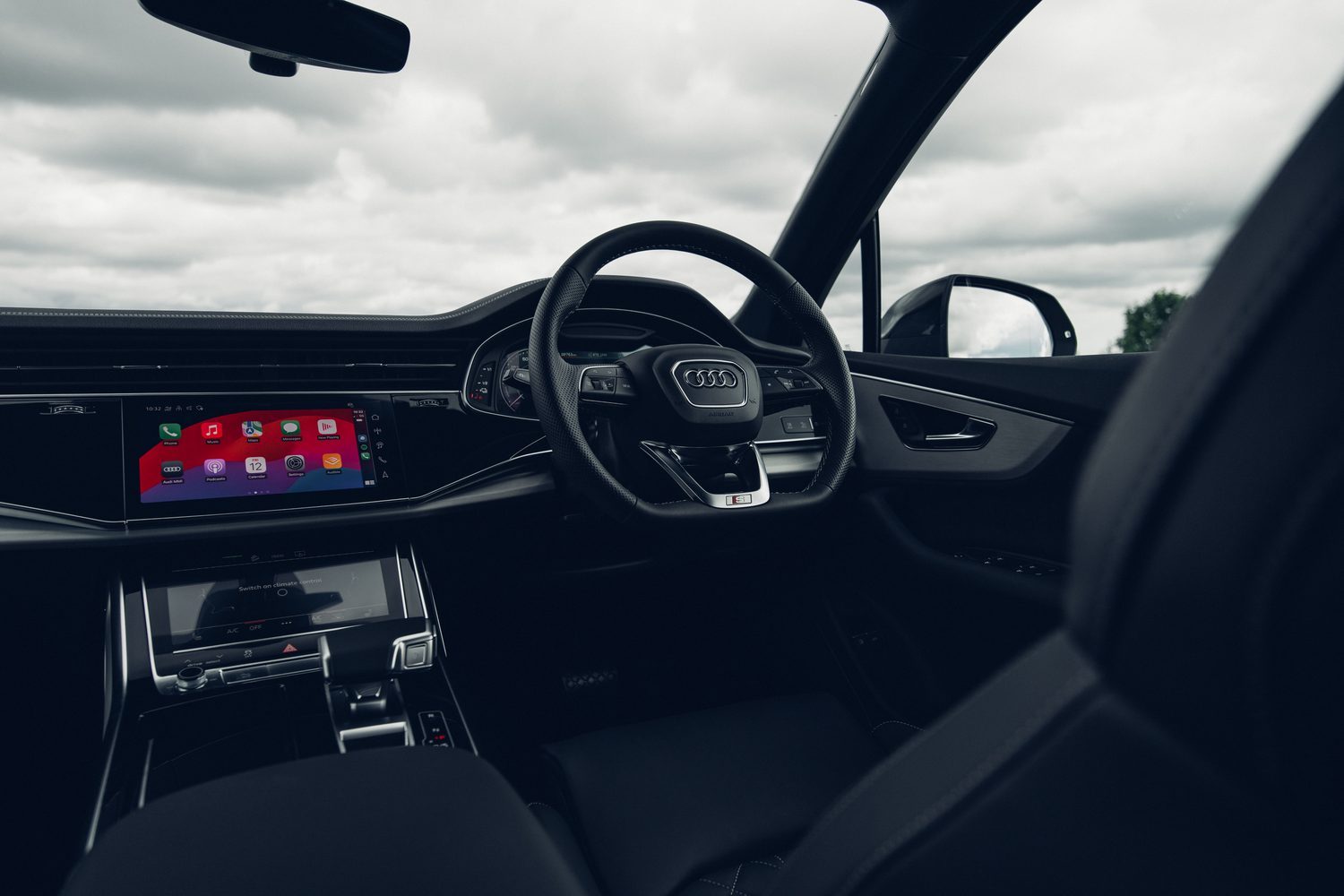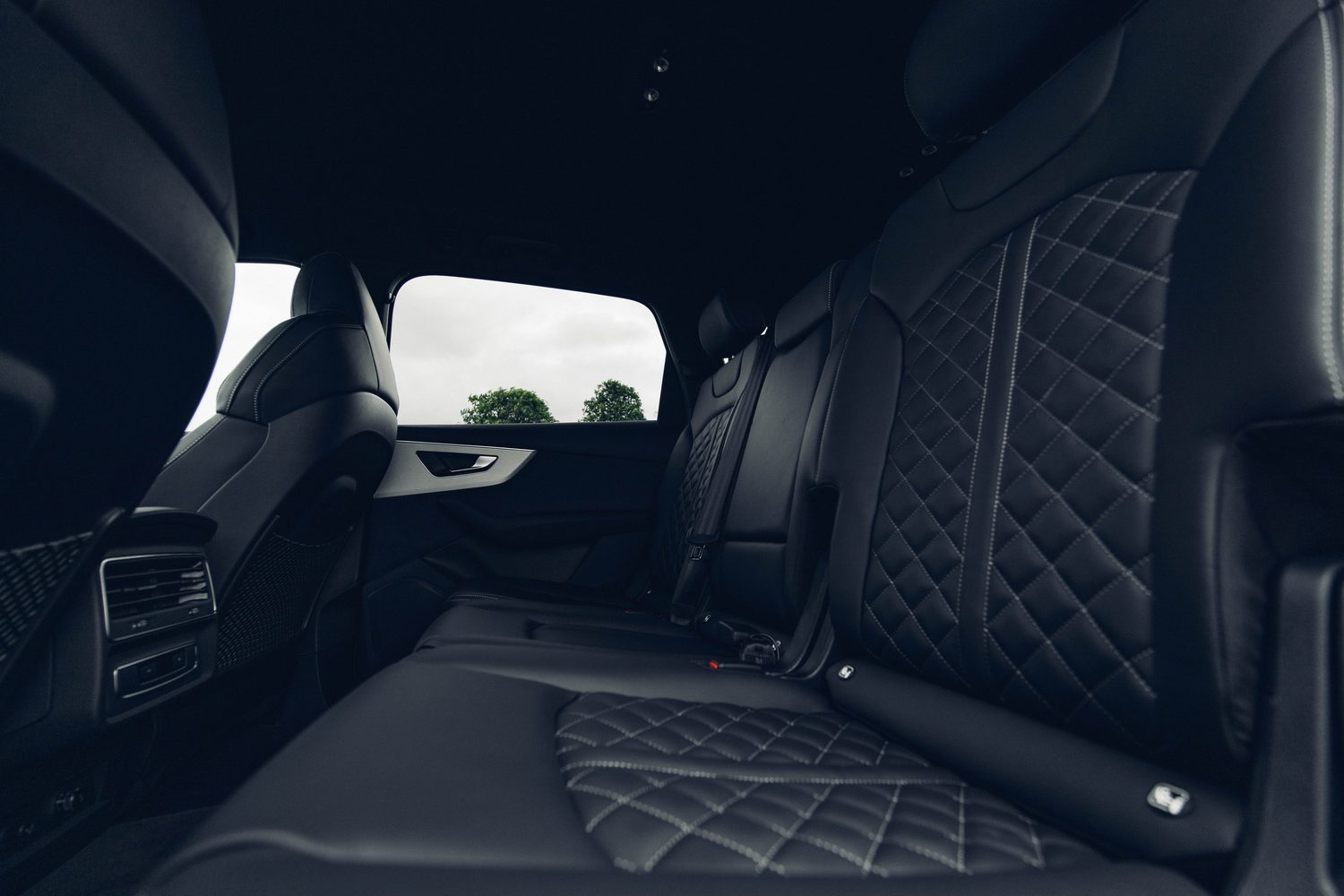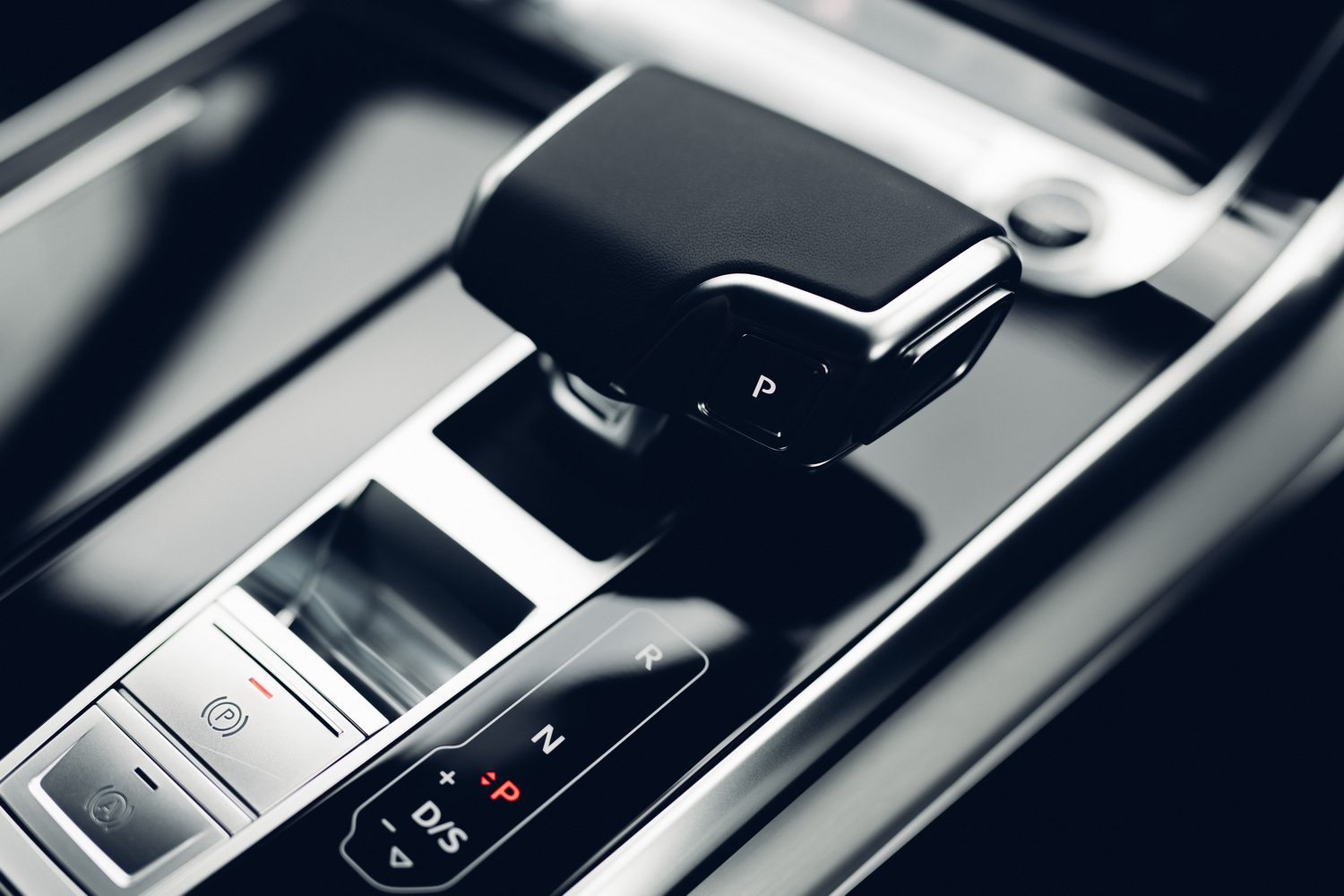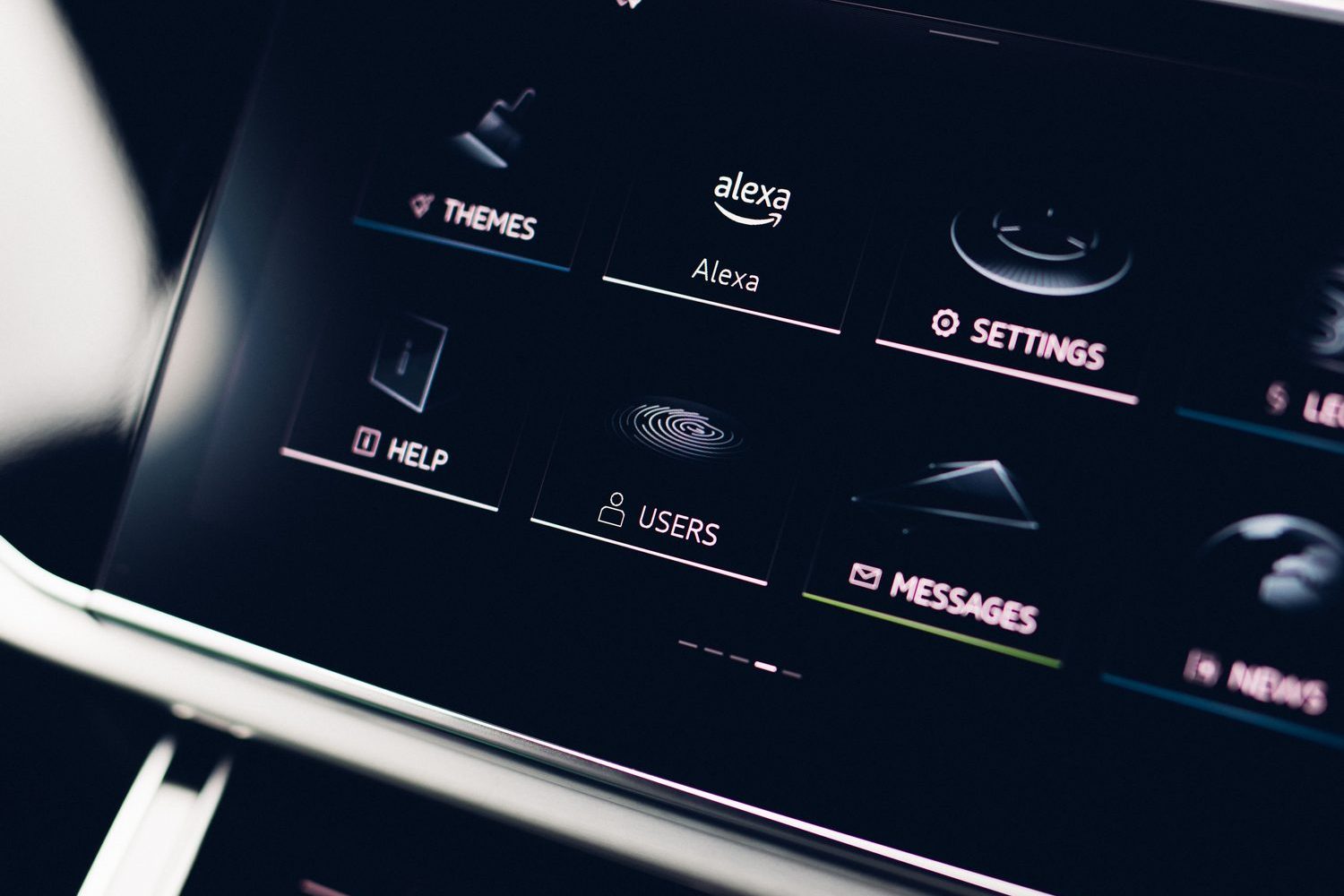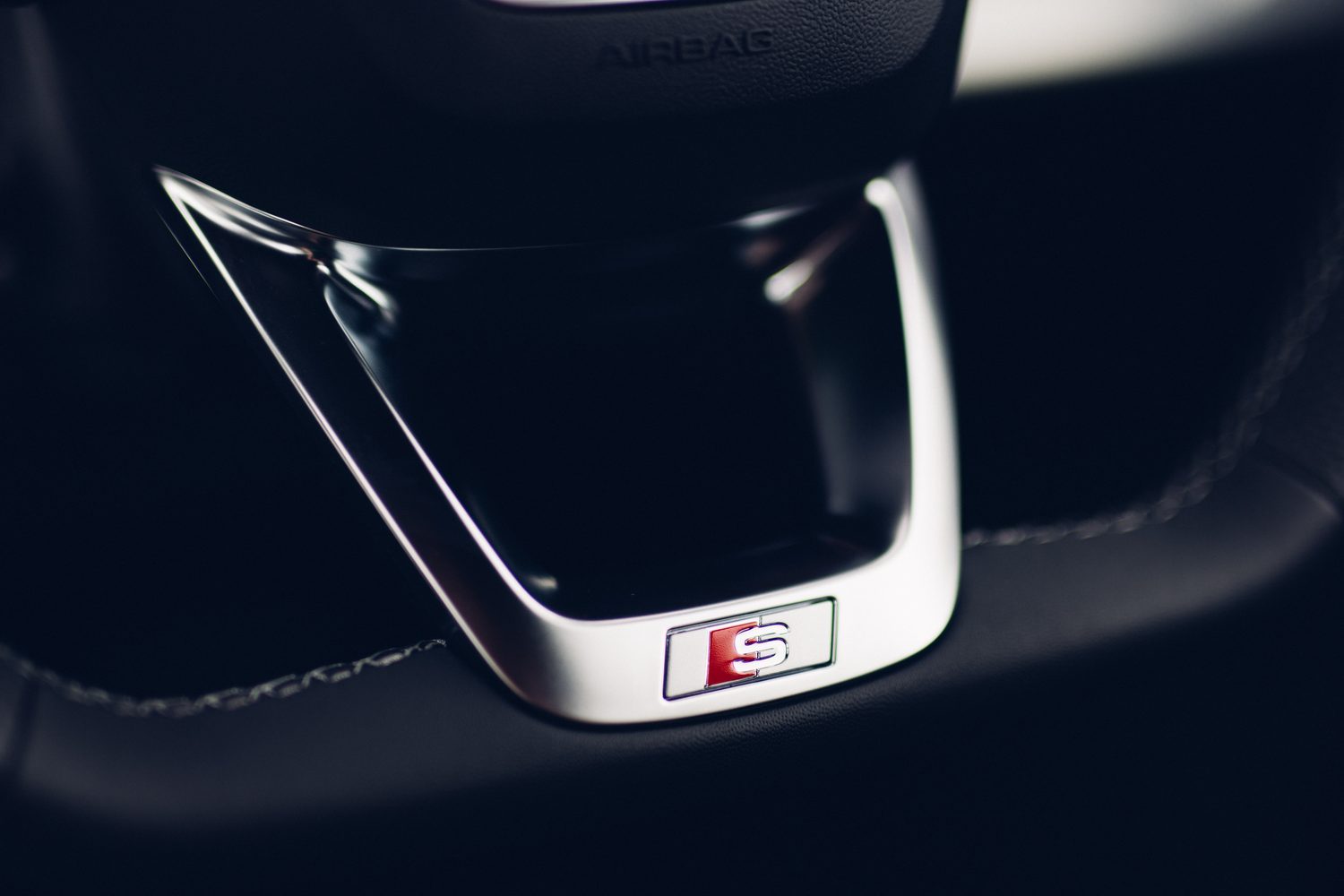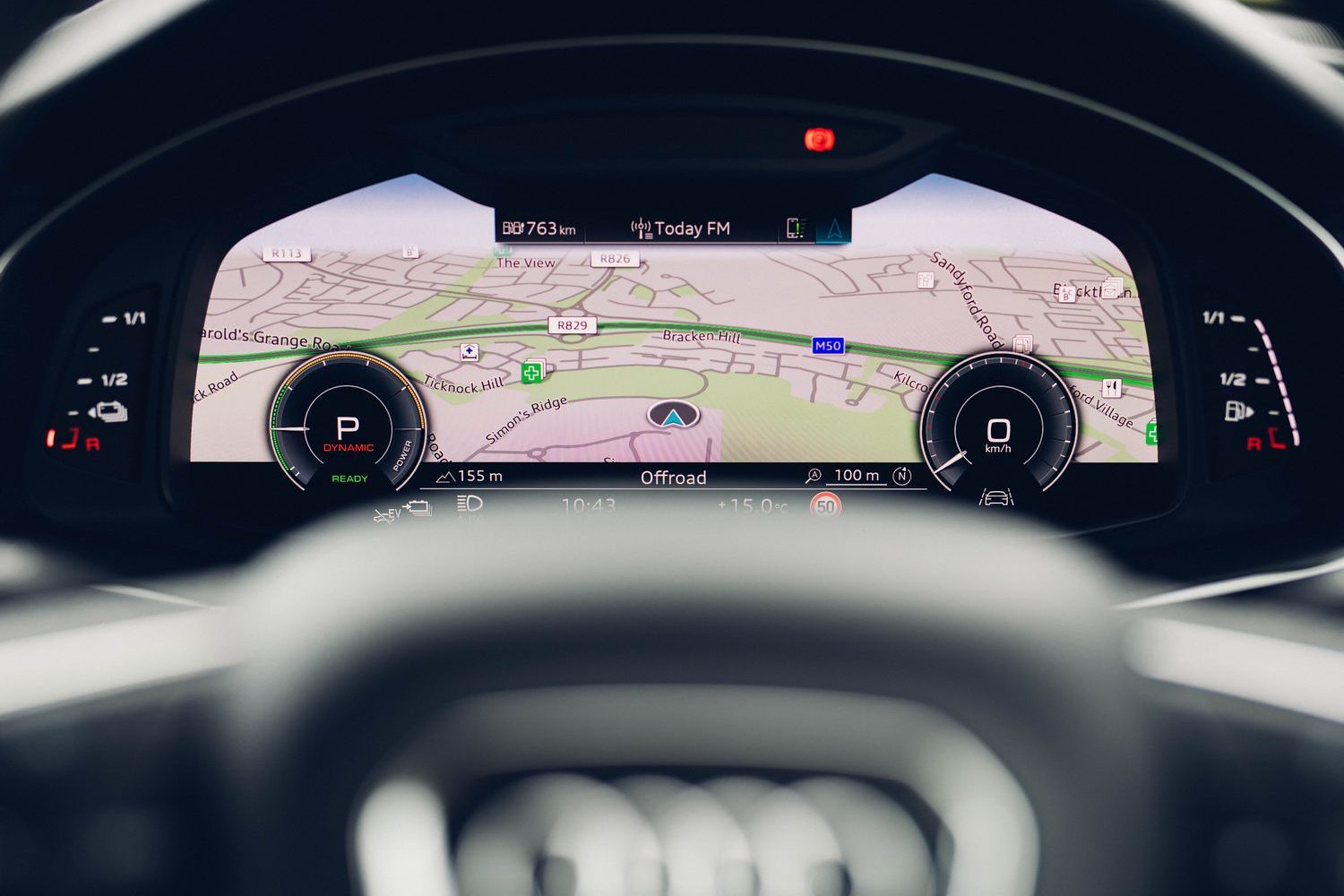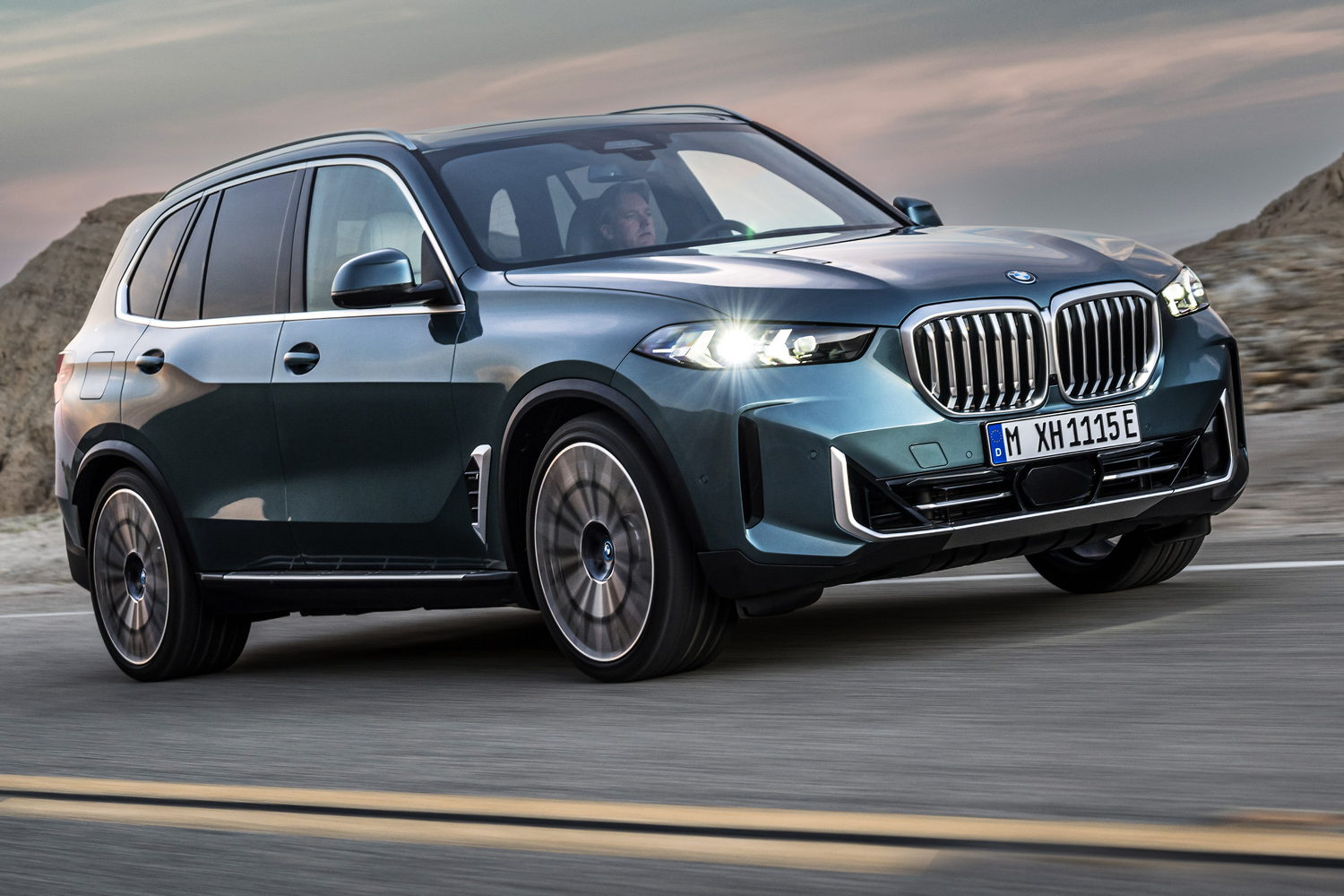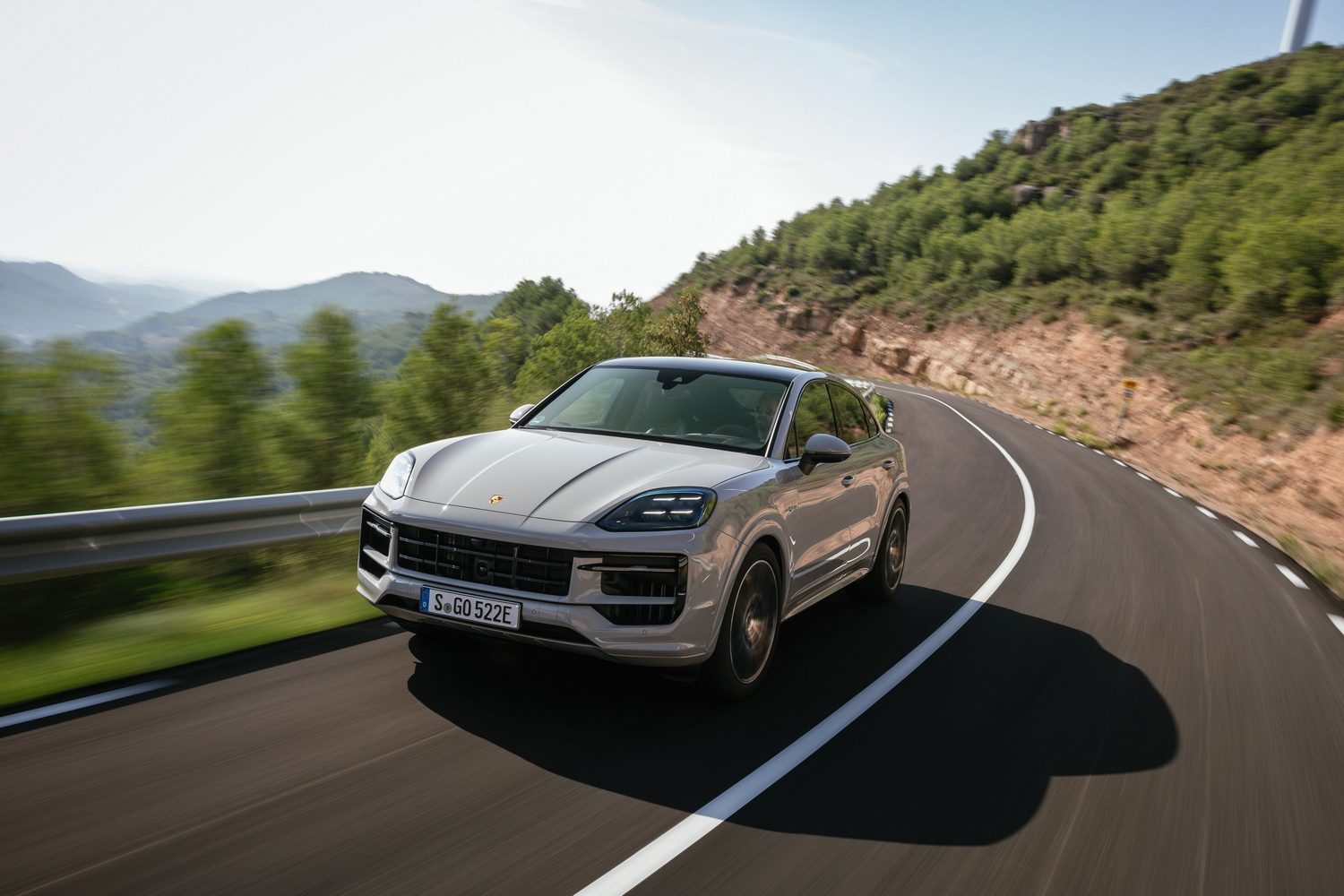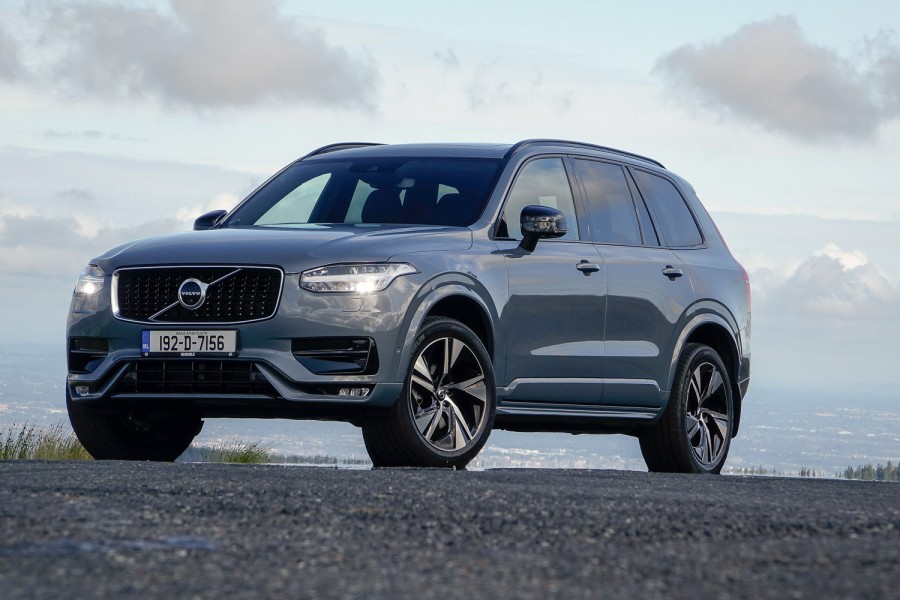The Audi Q7 has been with us a long time now. In fact, the original Q7 - which was Audi’s first-ever SUV - was launched way back in 2006. This generation has, almost shockingly, been around for knocking on a full decade now. It was first launched in 2015, making the Q7 one of the older new cars you can currently buy. That’s perhaps indicative of two things - one, Audi got the design right the first time out, and two, Audi is hedging its electric and hybrid car bets, so keeping the Q7 fresh and keeping it on sale for as long as possible makes solid business sense.
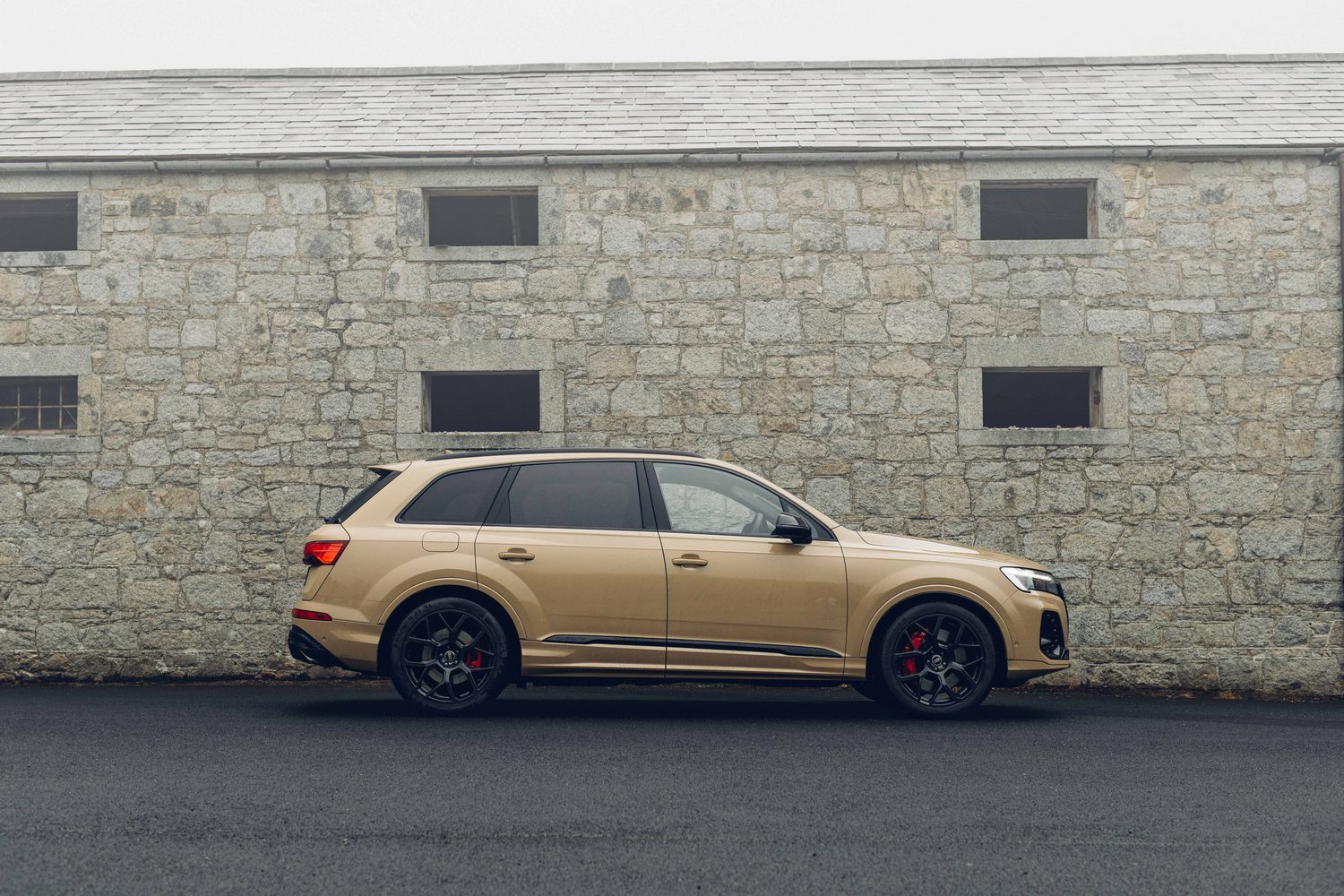
Hence the update for the current Q7, which visually doesn’t change very much. Really, there are just some small tweaks to the grille and lights at the front, and the addition of Audi’s slightly flatter-looking four-ring badge front and rear. The bigger news is that there’s a larger battery for this ‘55 TFSI e’ model which brings more electric-only range - up to 85km according to official numbers, although the S line model we’re testing cuts that to 83km because of its 21-inch alloy wheels.
How much is the Audi Q7 TFSI e in Ireland?
The plug-in hybrid version of the Q7 is actually the most affordable - thanks to Ireland’s PHEV-friendly tax rules, prices for the Q7 TFSI e start from €89,433, which is a full €20,000 cheaper than the most affordable diesel-engined version. Standard equipment for the SE model includes heated and folding door mirrors, frameless auto-dimming rear-view mirror, three-zone climate control, an electric tailgate, ‘Virtual Cockpit’ digital instruments, Audi Connect navigation, pre-sense emergency braking, 360-degree parking camera, cruise control with a speed limiter, and adaptive air suspension.
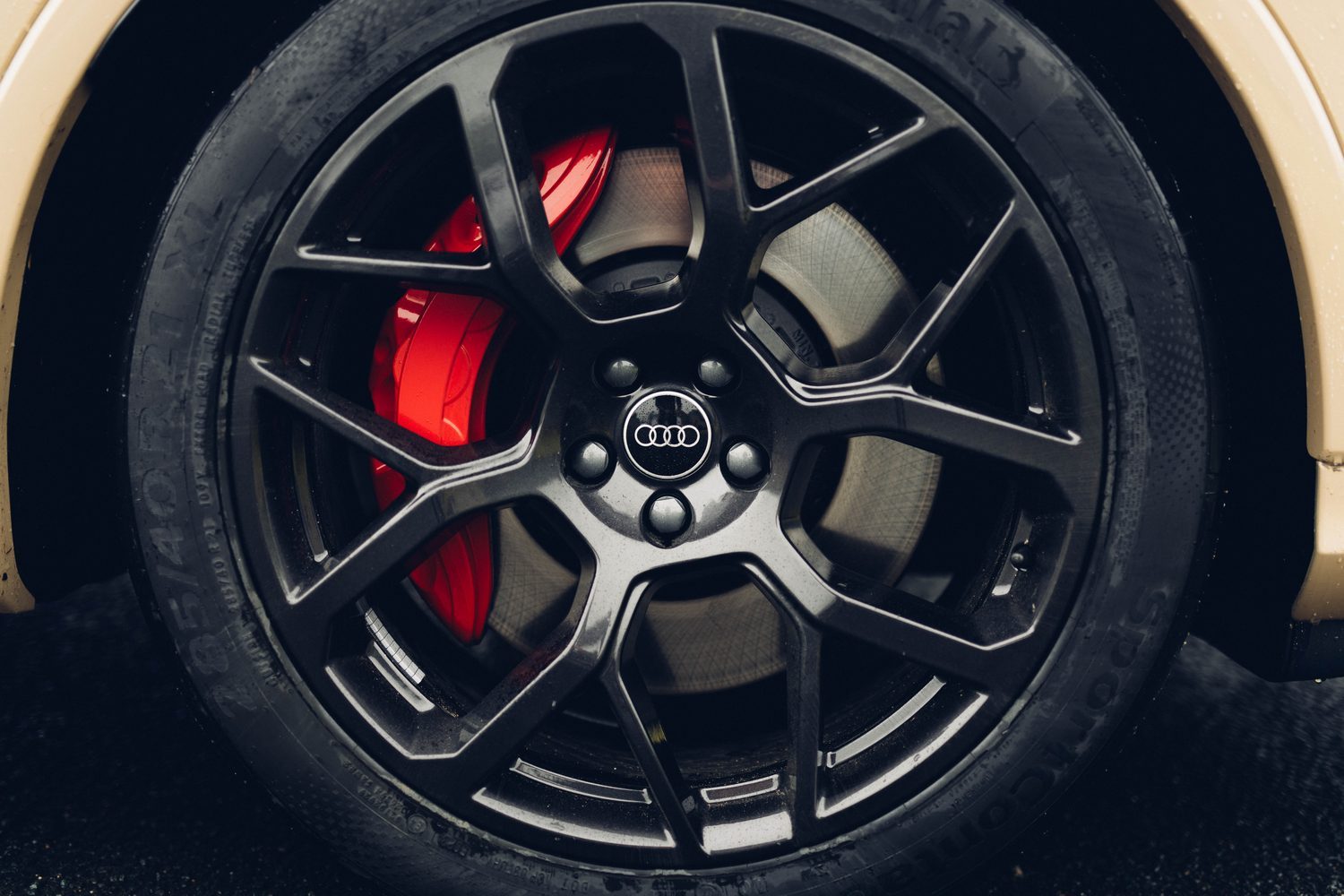
To trade up to a sportier S line model such as the one we’re assessing, you’ll need to spend €96,280 for the 55 TFSI e. Standard kit now also includes 20-inch alloy wheels, Matrix LED headlights, aluminium roof rails, heated and electrically adjusted front sports seats, brushed aluminium inlays, and ambient cabin lighting.
Our test car was equipped with the €1,815 ‘Black Styling Pack’ as well as a €309 ‘Ambient Lighting Plus’ system and €1,411 ‘Super Sports’ front seats. One option which not everyone will love - but which I rather liked - was €2,308 worth of ‘Sakhir Gold’ paint, which many compared - unfavourably - to milky coffee, or worse. At least it’s not yet another metallic grey Audi...
There is also a more expensive 60 TFSI e Q7, which comes only in Competition spec, and which has peak power of 489hp. It costs from €99,010.
A look inside the Audi Q7 S line
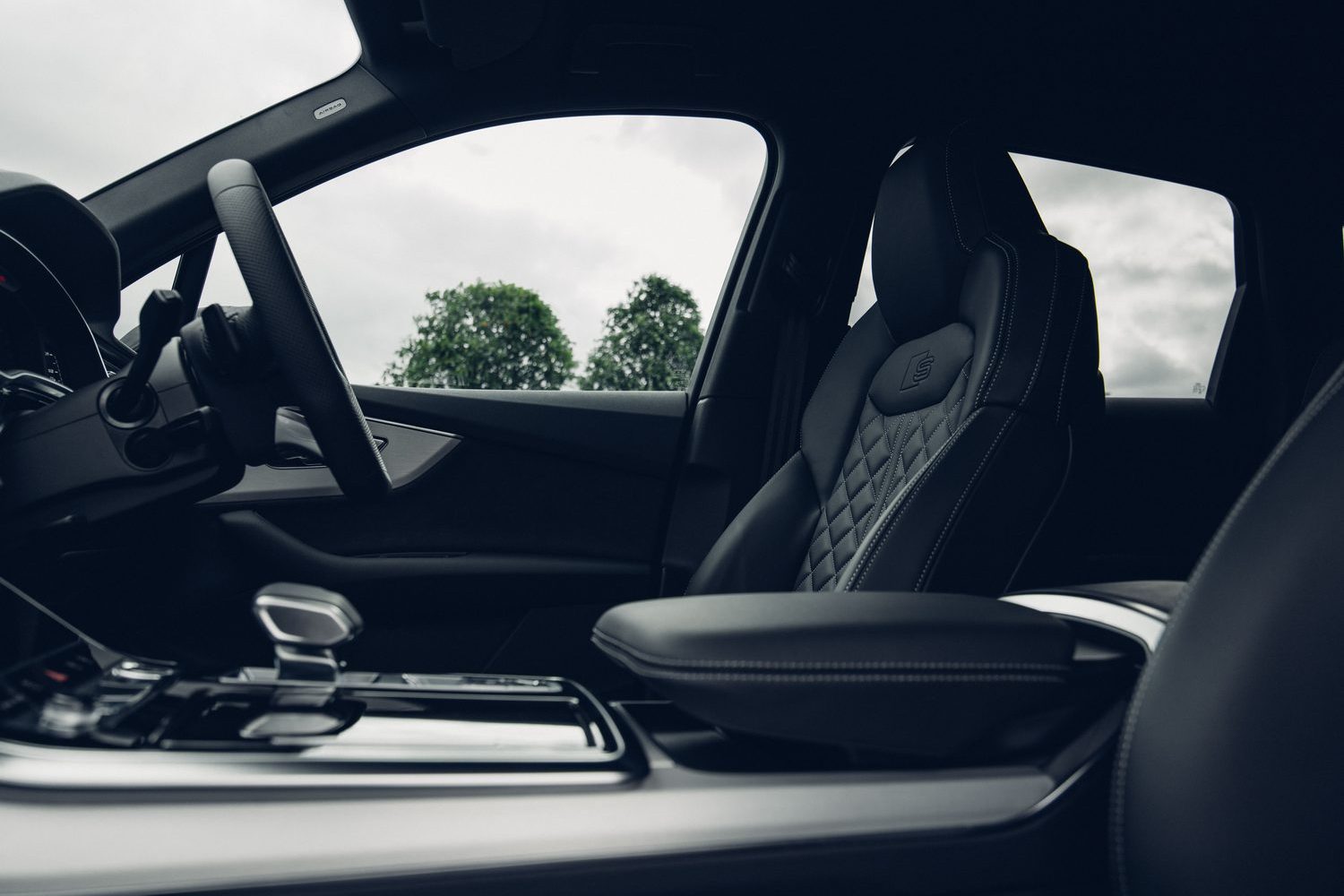
The Q7’s interior hasn’t changed much in recent years, bar some software upgrades for the digital screens. The overall effect is still rather good, although I do feel that this generation of Audis over-does it on the piano black and chrome, which leaves their cabins feeling too hard-edged and cold compared to the warmer tones found inside rival BMW products.
In this particular Q7, that’s partially compensated for by the upgraded Super Sports front seats, which have gorgeous, quilted leather centres and the Audi S line logo embossed on the backrest. They’re wonderfully comfortable. Build quality is as good as you’d expect from an Audi, especially the major touch points such as the gear selector and the delectable flat-bottomed three-spoke steering wheel, which feels almost too small for a car of this hefty size.
Space in the back is very impressive too, and that big rear bench should be just about wide enough to fit three adults sitting side by side.
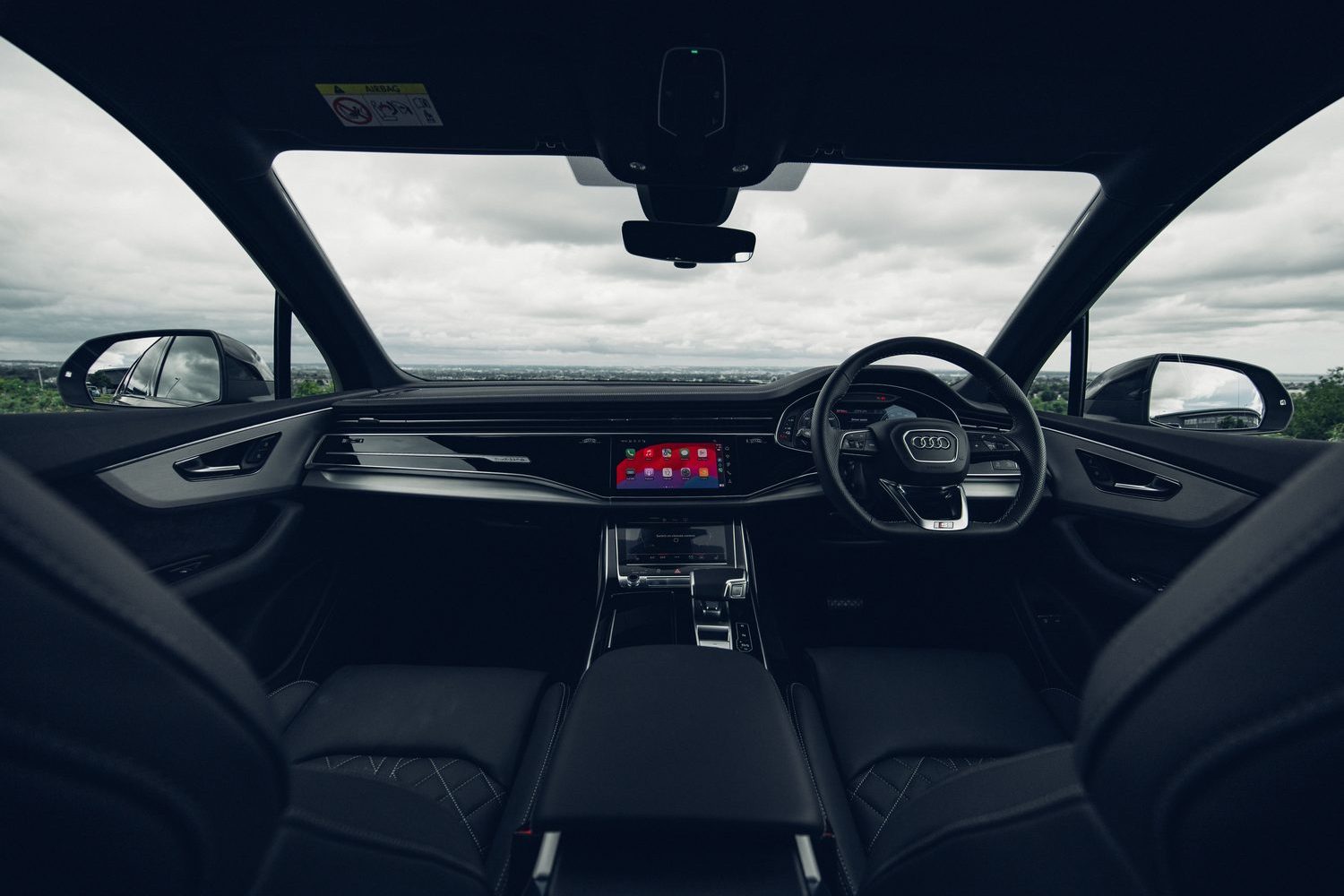
The downfall for the Q7 TFSI e comes when you look further back. Open up the powered tailgate and you’ll find a mere 563 litres of luggage space. That’s not exactly tiny but compare it to the 775 litres of the Volvo XC90 T8 plug-in hybrid and it starts to look pretty small. It’s all down to having to raise the boot floor to package the bigger hybrid battery, but there’s worse news to come...
Unfortunately, as a plug-in hybrid, the Q7 can only carry five people. There are no folding seats in the boot, as you get in the diesel versions, and also as offered by the plug-in Volvo XC90. That’s a big deficit for the Audi in the practicality stakes.
Speaking of which, for such a big car, there’s also not all that much storage room up front. You’re limited to a shallow space under the front-seat armrest, some not-massive door bins and a pair of relatively small cupholders under a hinged cover.
How many child seats can I fit in the Audi Q7 55 TFSI e?
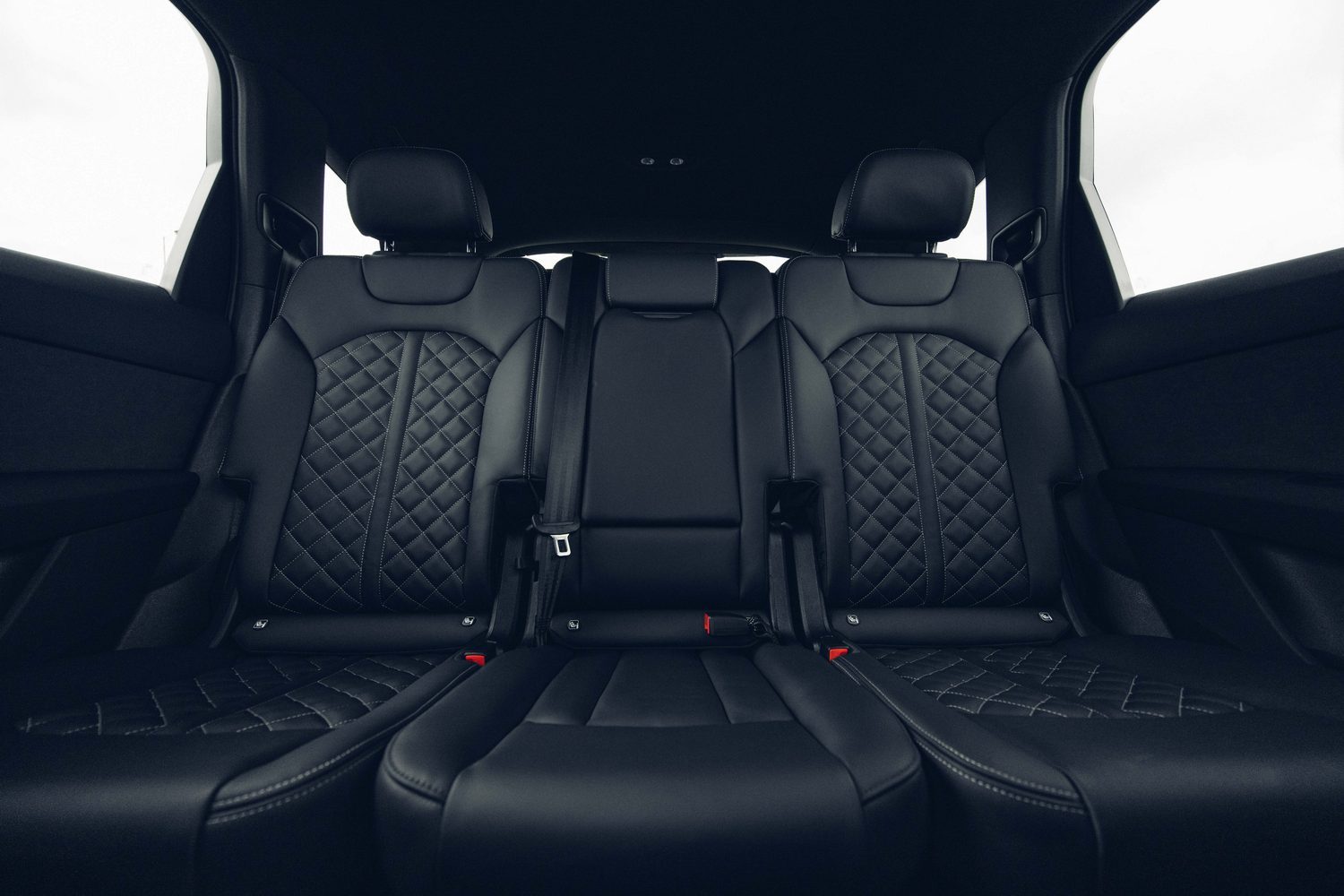
Here’s where the Audi claws back some practical points - it has ISOFIX anchor points for three child car seats in the back, a genuine rarity in the modern motoring world, and something that makes this one of the best cars for a rapidly growing family. It would be better again if this were a seven-seat Q7, as that would have five ISOFIX points, one for each rear seat, but that will only apply to some buyers. If they really want a Q7 and need three rows of seating, then they’ll have to go for a diesel model instead.
How safe is the Audi Q7?
The Q7 was last assessed by Euro NCAP in 2019 and came away with a full five-star score, including a 92 per cent rating for adult occupant protection, 86 per cent for child occupants, 71 per cent for vulnerable road user protection, and 72 per cent for its safety assistance systems.
The Audi Q7 55 TFSI e's on-board technology
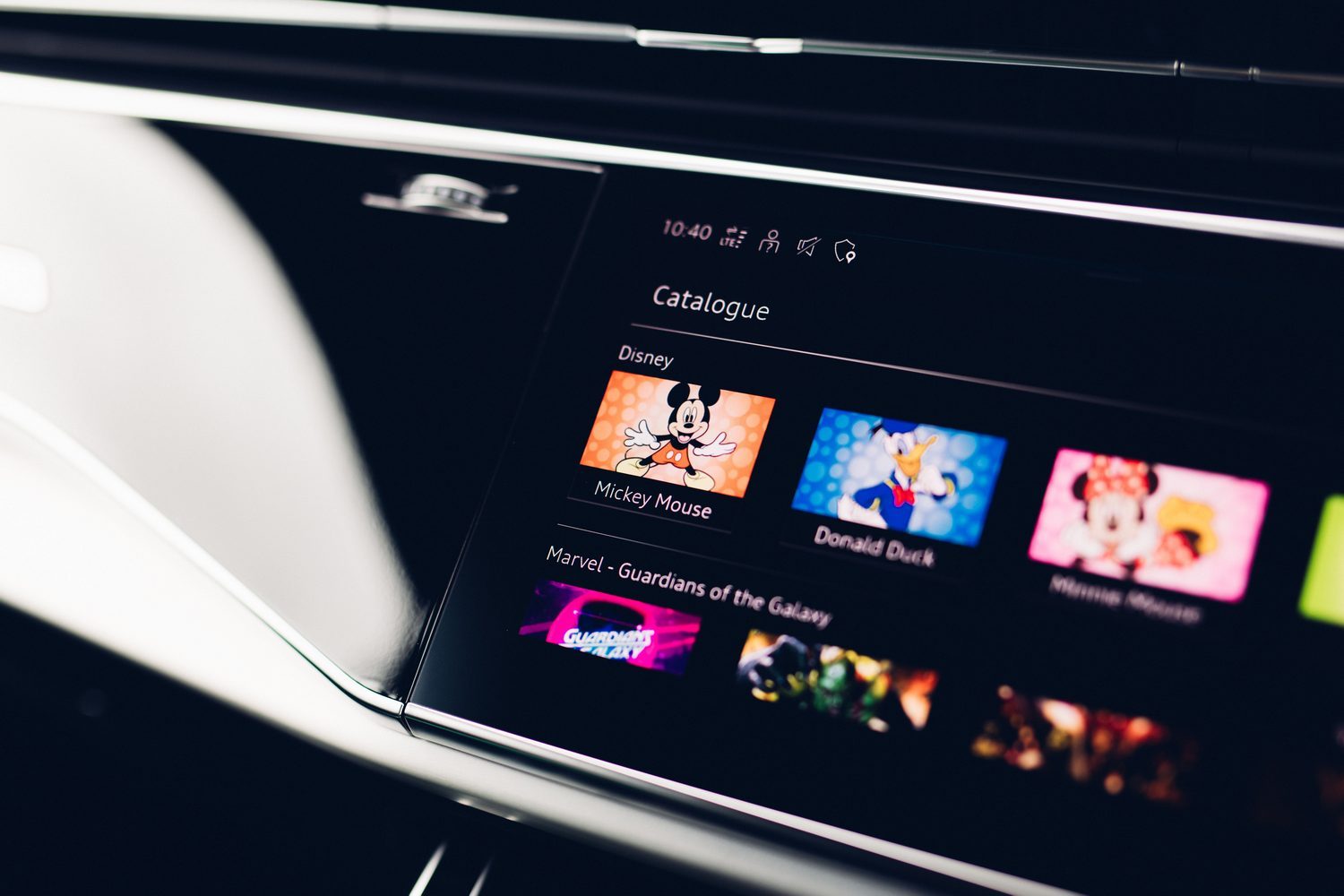
Audi has kept the Q7’s touchscreens up to date with regular software updates, and the twin-screen layout does help to simplify things somewhat. The upper 10.1-inch screen looks after the navigation and entertainment (including Apple CarPlay and Android Auto connections), while the lower 8.4-inch screen oversees the climate controls. This is better than having everything grouped on one big screen, and there are still some handy physical buttons for stereo volume, and Audi’s Drive Select driving modes.
However, the screens aren’t quite perfect. The menu layout and icons are all a bit dark and monotone, but there’s a bigger problem with the haptic effect. This simulates a ‘click’ sensation as you press the screen to make your selection, but the problem is that, often, the ‘click’ is triggered when you haven’t actually fully selected the button you’ve aimed at. This can leave you momentarily wondering whether you’ve actually pushed the button at all, and it can lead to you spending more time staring at the screen, which isn’t great.
There are at least proper physical buttons on the steering wheel, which makes them much easier to use, and the digital instruments are exemplary in their clarity. It’s just a shame that you can’t meddle with the on-screen layout a bit more.
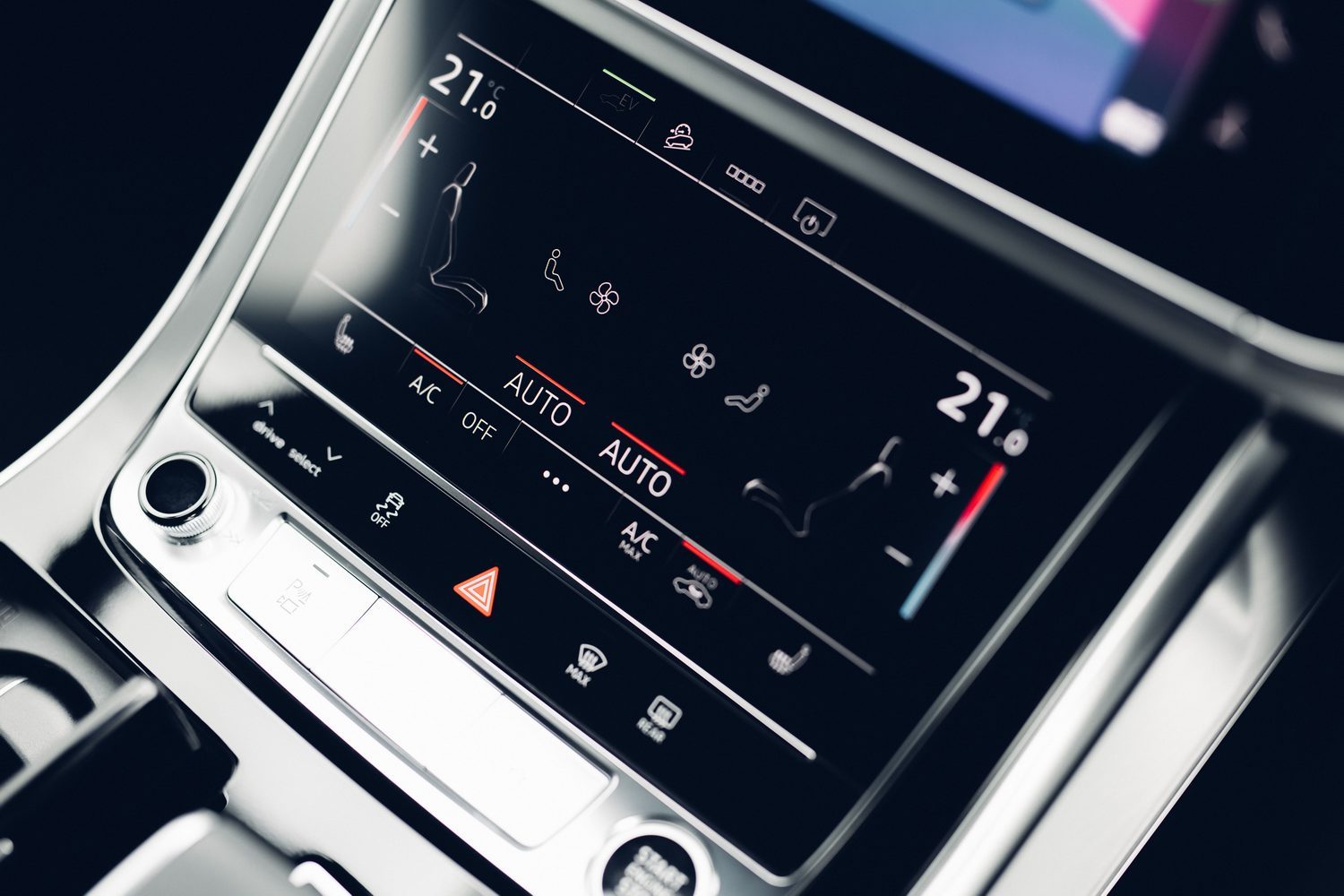
Driving the Audi Q7 55 TFSI e
The combination of electric and turbo V6 petrol power - and this entire drivetrain is shared with the likes of the Porsche Cayenne and the Volkswagen Touareg R - makes for plenty of grunt. The official combined outputs of the Q7 55 TFSI e are 394hp and 600Nm of torque, enough to hurl this big, beige machine from standstill to 100km/h in a GTI-like 5.7 seconds. You could trade up to the 60 TFSI e to do the same sprint in 5.0 seconds, but honestly, who needs to do that in a 2.5-tonne SUV? This 55 TFSI e is more than fast enough for anyone, really.
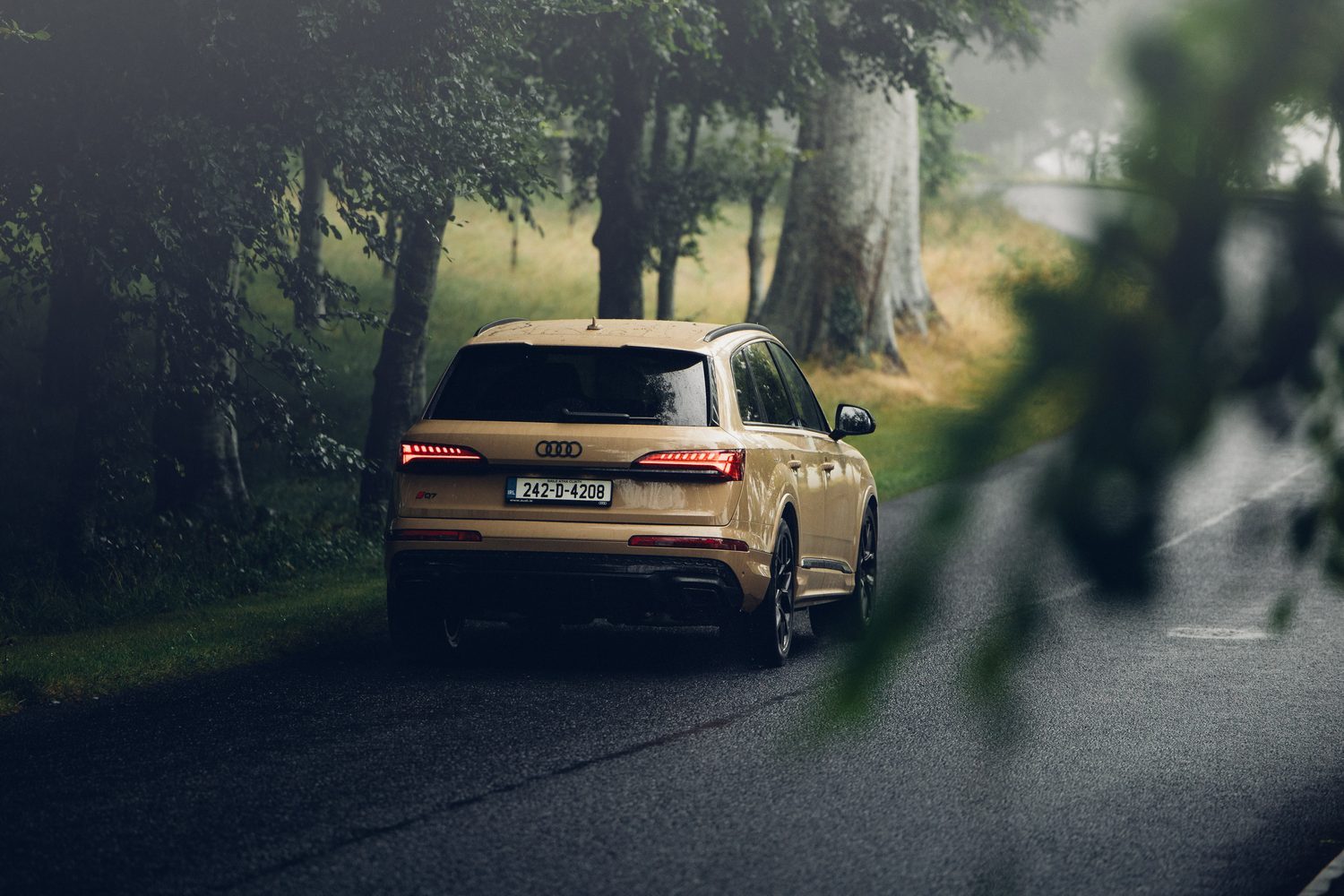
For all that performance, the Q7 is equally good at just mooching about. Running on electric power alone, the electric motor provides 176hp and up to 450Nm of torque, so at low-to-medium speeds you probably won’t even notice that the petrol engine hasn’t woken up yet. Up the pace and the V6 chimes in smoothly - this Q7 manages the transition from electric to hybrid power and back again with exceptional delicacy - so you’re never left waiting for power.
The brakes are also worth a mention here - they're strong and tireless, and like the hybrid system good at seamlessly blending regenerative braking with physical pads-and-discs braking.
The Q7 TFSI e is also just a really enjoyable thing to drive. You’d assume that a 2.5-tonne hybrid would heave over in corners like spilled blancmange, but no, it stays pretty level, and our test car didn’t even come with the optional active anti-roll system. It doesn’t really need it, and I’m not sure that the also-optional rear-axle steering would make much of a difference either, except in tight parking manoeuvres.
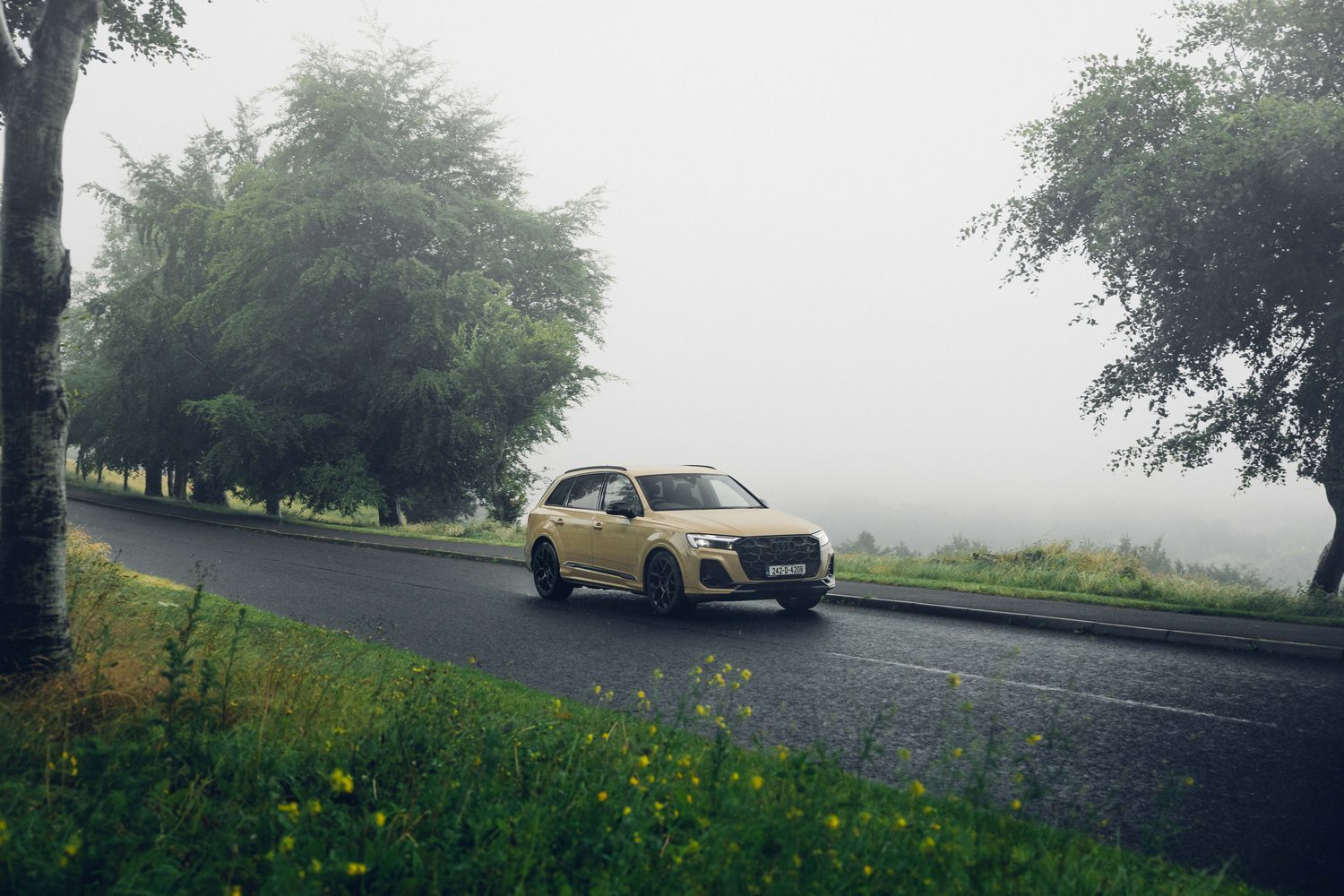
For a big, chunky car - and one with a small steering wheel - the Q7 55 TFSI e just feels really surprisingly positive and responsive to drive, verging on being good fun in certain circumstances. It also does the whole effortless long-haul cruising thing with aplomb, and while the ride is never anything less than firm, the adaptive air suspension keeps everything from getting too rowdy.
How economical is the Audi Q7 55 TFSI e?
Obviously, the official 1.4 litres per 100km WLTP fuel consumption figure is going to prove pretty elusive, even if you make maximum possible use of that bigger 22kWh battery pack and drive the Q7 in electric mode as much as possible. The official range of 83km is also somewhat far-fetched - around 65km is much more likely, unless you’re up for sainthood any time soon. Long-range fuel economy, doing the driving on a flat main battery, should work out at about Audi’s claim of 9.8-10.5 litres per 100km, which isn’t exceptional, but in real terms not all that much worse than you’d get from a diesel-engined version.
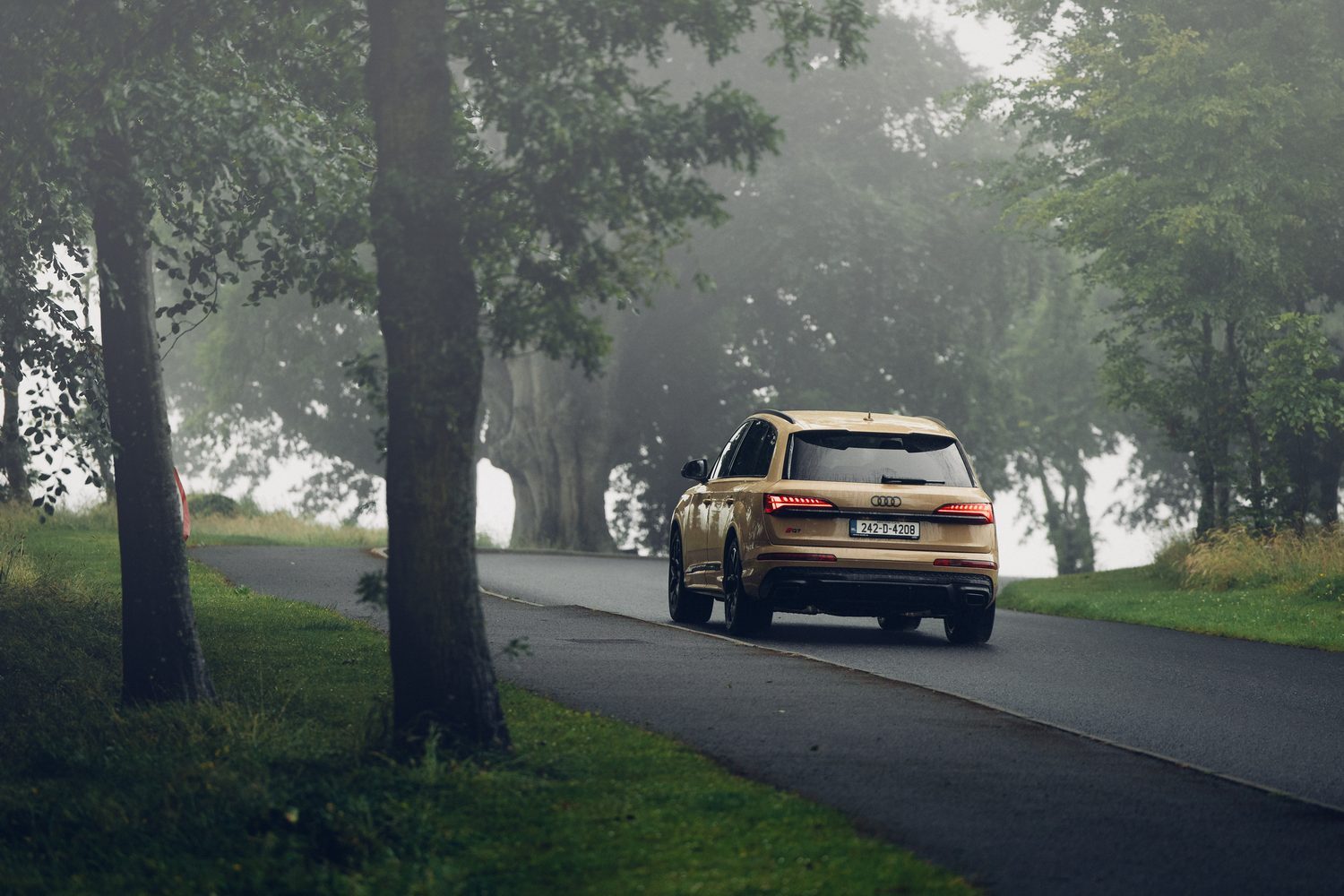
The real benefit here is in tax terms - the 55 TFSI e is in the second lowest band for annual motor tax and will be cheaper in BIK terms for business user-choosers.
The reasons you'd buy an Audi Q7 55 TFSI e
The lack of a combined seven seats and plug-in tech grates a bit (if Volvo can do it...) but actually, in spite of its age, the Q7 still feels fresh and good to drive, and the extra electric range from the new battery is more than welcome. Would you go for Sakhir Gold paint? I would.
Ask us anything about the Audi Q7 55 TFSI e
If you want to know more about the Audi Q7 or indeed anything about any other car on sale in Ireland, why not avail yourself of our Ask Us Anything service? Simply post your question and our experts will get to work, giving you the information you need to help make your next car-buying decision. Best of all, it’s completely free of charge.

